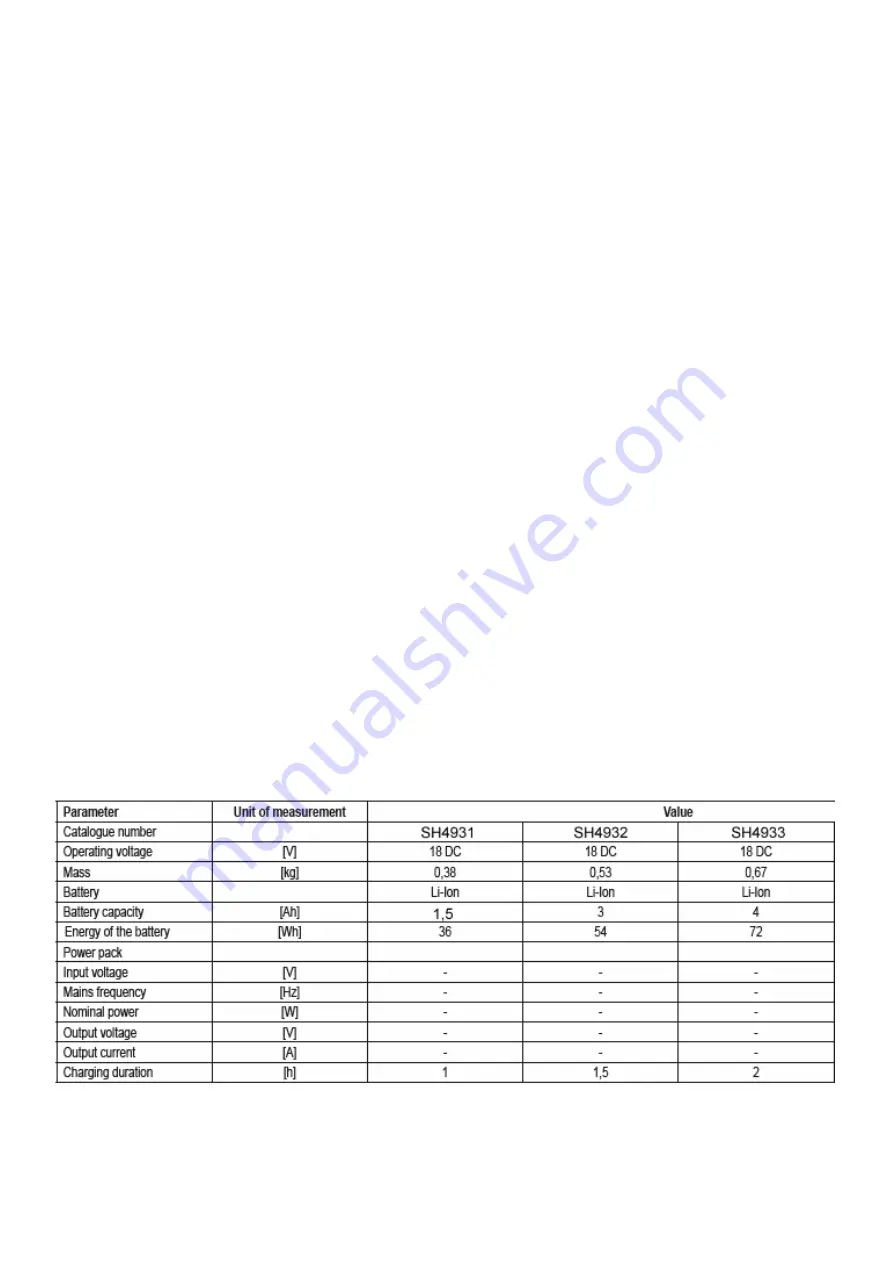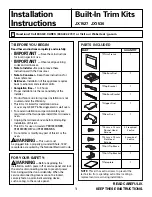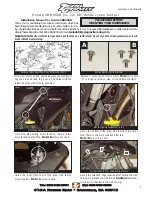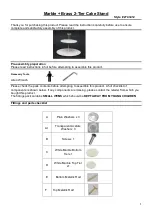
Storage of the battery
In order to maximize the life of the battery, appropriate conditions must be ensured for storage. The battery lasts about
500 cycles of "charge-discharge". The battery pack should be stored in a temperature range of 0 to 30 °, with a relative
humidity of 50%. If the battery is to be stored for a long time, it must be charged for up to 70% of its capacity. In the event
of prolonged storage, the battery should be recharged regularly. Do not allow the battery to be fully discharged, as this will
reduce its lifetime and cause irreversible damage.
During storage, the battery will gradually discharge as a result of the drains. The self-discharge process is dependent on
the storage temperature, the higher the temperature, the faster the discharge process. Incorrect storage of the batteries
may lead to electrolyte leakage. In the case of leakage, the electrolyte should be disposed of with a neutralizing agent, in
case of eye contact with the electrolyte, the eyes should be rinsed with a stream of water and immediately sought medical
attention. The use of tools with a damaged battery is prohibited.
After the battery life has elapsed, it must be handed over to a specialized waste disposal center of this type.
Transport of batteries
Li-Ion batteries are considered as hazardous materials according to legal regulations. The user of the tool can transport
the tools with the battery or the batteries themselves by land transport. In this case, additional conditions may not be met.
If the shipment is entrusted to third parties (for example, a shipment through a courier company, it is necessary to follow
the regulations for the transport of hazardous materials.) During transportation it is necessary to remove the dismantled
batteries from the tool and ensure that the unprotected contacts are secured. did not move inside the package during
transport.
Charge the battery
Notice! Before charging, disconnect the mains power supply from the power socket by pulling the mains plug out of the
mains socket. Additionally, the battery and its contacts must be cleaned of dirt and dust with a soft, dry cloth.
The battery has a built-in charge indicator. When the button is pressed, the diode (I) lights up. The more they shine, the
more the battery is abitiated. If the LED does not light when the button is pressed, it indicates that the battery is
discharged.
Disconnect the battery from the tool.
Insert the battery into the charger assembly (I).
Connect the charger to an electrical outlet.
The red LED lights up, which means that the charging process is in progress.
When the charging has finished, the red LED turns off and the green LED lights up to indicate that the battery is fully
charged.
Unplug the mains plug from the electrical outlet.
Press the battery latch button and slide it out of the charging station.
Notice! If the green LED lights up when the charger is connected to the power supply, it means that the battery is fully
charged. In this case, the charger will not start the charging process.
TECHNICAL SPECIFICATIONS





































